|
Our offices will be closed for the holiday season from December 19, 2025 at 3:30 PM to January 5, 2026 at 8:00 AM.
For emergencies, please send your request to
sales@rematek-energie.com
.
|
About Solar PV (solar panels) |
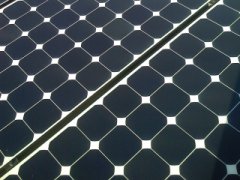
|
|
Inside this article |
Introduction to Solar PV
The photovoltaic (PV) effect, which means converting solar radiation into electricity, was first discovered by Becquerel in 1849.
 Solar radiation is converted into electricity
Solar radiation is converted into electricity
The first solar modules, that resemble today's technology, appeared in the 1950 and were primarily used for space applications. Following the 1970's energy crisis, more R&D and commercial development of PV helped to further the deployment mostly for off-grid applications.
In early 2000, Germany was one of the first countries to implement what is called a "fee in tariff" (FIT). FIT is a policy mechanism designed to encourage the adoption of renewable energy sources. In 2009, 63 nations have adopted FIT programs including Ontario.
Basic components of a photovoltaic (PV) system
PV modules
PV modules are a combination of semi-conductor cells that convert solar radiation into electrical current. PV modules typically have 36, 54, 60 or 72 cells.
 PV modules
PV modules
PV modules come in 3 main categories: Monocrystalline, Polycrystalline and Amorphous or Thin Film. Typically, monocrystalline modules have the highest efficiency output at 13-16%, while polycrystalline has an efficiency output of 12-14% and thin film 8-10%.
As it stands today, much R&D is focused on Thin Film as the manufacturing costs are approximately 20% less than typical crystalline technology and applications are more versatile for Building Integrated PV products. However, Thin Film only have a small market share of approximately 20% vs 80% for crystalline technologies.
Solar array
The Solar array is one or more PV modules which converts sunlight into electricity.
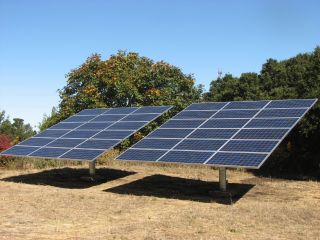 Example of solar array
Example of solar array
Depending upon the wiring configuration, we can produce either 12, 24 or 48V (typical) as needed to recharge the batteries. For residential grid tied applications, that voltage configuration is usually between 200-600VDC.
Batteries
The battery bank consist on one or more batteries that stores energy for use at night or during periods of low sunshine. Typical battery configuration is 12, 24 or 48 Volt.
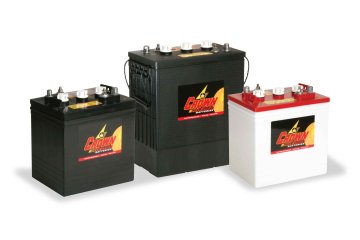 Batteries store energy for use at night or during periods of low sunshine
Batteries store energy for use at night or during periods of low sunshine
Charge controller
A charge controller is an electronic device that prevents batteries from being overcharged and in some cases from being overly discharged. It also prevents the batteries from reverse current at night.
 Charge controller device
Charge controller device
Electrical Load
A load is your typical electrical appliance that uses electricity to function.
It is important that these appliances are efficient and that they consume the least amount of energy as possible. These loads can be 12-24-48VDC or 120-240VAC.
Inverter
An inverter is an electronic power conditioning equipment that converts DC (direct current) power to AC (alternative current).
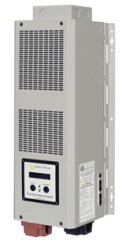 Inverter as above convert DC power to AC
Inverter as above convert DC power to AC
We typically use 110-120AC 60Hz power in homes and offices in North America while Europe and Africa use 220-240AC 50Hz.
Balance of system (BOS)
The balance of system includes wiring, hardware, protective equipment and all other parts and pieces to make sure that you have a good secure working system.
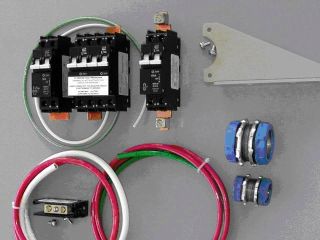 Some equipments involved in a balance of system
Some equipments involved in a balance of system
FAQ about solar PV
- Why haven't we seen more PV technologies used in the world today?
- What can we power with solar energy?
- How much does it cost?
- Is there a lot of maintenance required?
- Why solar energy?
- Where can I find out if there is any financial assistance?
Why haven't we seen more PV technologies used in the world today?
The PV market has been expanding rapidly all over the world. This being said, the initial investment is still relatively expensive. The cost has significantly dropped over the last 15 years and can be, in some cases, cost effective compared to traditional distributed power such as coal, gas, nuclear and Hydro especially where grid tied power systems are driven by financial incentives that makes solar PV a very lucrative investment.
Solar PV has had a sustained growth of over 30% for the last 15 years.
What can we power with solar energy?
Solar energy can be used to power all appliances that require electricity.
When the system is tied to the grid, the solar energy is exported to the grid. The meter counts the energy "in" and "out".
An average Canadian home consumes between 30-50 kWh/day therefore it would take at least a 7-8 kW array to fulfill that energy requirement. For applications where the electrical grid is not available, it is imperative to evaluate your energy usage in order to size the system accordingly.
Here are some examples where you can use solar energy:
- Television and radio
- Residential housing
- Water pumping
- Indoor and exterior lighting
- Vaccine refrigerator
- Street lighting
- Power tools
- etc...
Table below give typical energy requirements for some common appliances:
| Appliance | Energy requirement |
|---|---|
| Television 19" | 160W |
| Stereo | 240W |
| Refrigerator 12 Volt | 50W |
| Water pump 12-24 Volt 1/4hp | 1000W |
| CD player | 75W |
| Computer | 150W |
How much does it cost?
The answer is simple; the more you consume energy the more it will cost you.
By managing your consumption you can greatly reduce the size of your system and thus, the cost of your system. However, the cost of your system is dependent not only on your consumption, but also varies depending on the country and the latitude where it will be installed.
For a grid tied system without batteries, cost varies around $7-10/watt and around $10-25/watt for an off-grid system with batteries.
Is there a lot of maintenance required?
There really isn't much maintenance required other than a visual inspection once a year to make sure leaves or other obstructions are not shading the solar modules. Depending on the type of batteries you use, you might have to verify the level of electrolyte and refill the batteries with distilled water from time to time.
Please ask you local dealer for details on which batteries are appropriate for your application.
Why solar energy?
There are many advantages to using solar energy:
- The energy required to fabricate a solar module is produced and paid back within the first year of use. Solar modules are made of materials that are abundant in nature and recyclable.
- Solar modules do not pollute or produce any noise and have a life expectancy of more than 25 years.
- It is relatively easy to predict the number of sunlight hours for any given region on the globe.
- For grid-tied installations in urban areas, solar modules produce energy during the peak demand period (9am-5pm and summer cooling) and help to offset this high energy demand.
- PV technology can blend into the urban landscape through innovative products such as solar shingles and other esthetically pleasing building materials.
Where can I find out if there is any financial assistance?
You can contact you local utility company, municipality or renewable energy dealer. There are many financial programs in different countries that help people who want to install solar energy systems. It can't hurt to ask!
Fast facts
- One kilowatt-hour (kWh) equals the amount of electricity needed to turn on a 100 watt light bulb for 10 hours.
- A 1-2 kilowatts (1000-2000 watts) system takes between one and two days to install.
- Solar modules average 40% of the total cost of an installed solar energy system. For off-grid systems, the batteries account for another 30%.
- Southern Canada receives approximately 3.5 hours/day of peak sunlight on average throughout the year.
- Solar modules still produce energy in cloudy conditions.
- Module efficiency depends on the different technologies such as monocrystalline, polycrystalline or amorphous silicon.
- A 1 kilowatt Solar System requires about 100 square feet of installation area.
|
|
|
RBQ: 5757-1960-01 All rights reserved © Rematek Énergie inc.


